Austin Economic Indicators

July 1, 2021
The Austin economy continued to post strong performance in May. The Austin Business-Cycle Index grew at a robust rate, led by declines in the unemployment rate and recent broad-based job gains. COVID-19 hospitalizations steadily declined after increasing briefly in late April. Existing-home sales accelerated in May, and regional consumer spending remained strong.
Business-Cycle Index
The Austin Business-Cycle Index—a broad measure of economic activity—expanded an annualized 8.0 percent in May after growing 10.3 percent in April. Recent strength in the economy can be attributed to job gains and unemployment rate declines. May marked the 13th consecutive month of growth in the index and its first reading that surpassed the February 2020 peak, which suggests continued strength in the Austin economy (Chart 1).
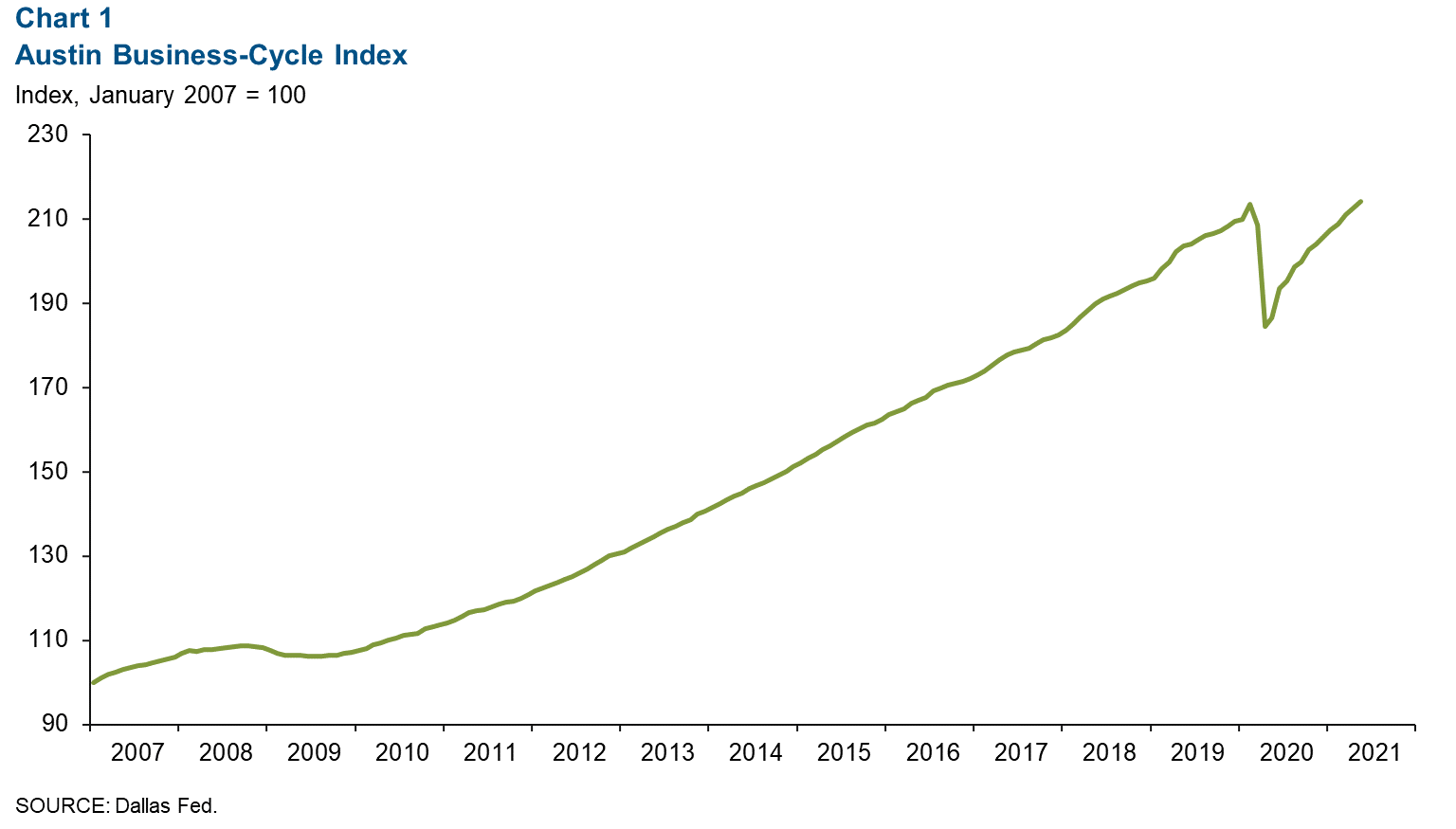
Labor Market
Unemployment Rate Falls
Austin’s unemployment rate declined in May to 4.6 percent, the lowest level since March 2020 (Chart 2). This is well below the state’s jobless rate of 6.5 percent and the nation’s 5.8 percent rate.
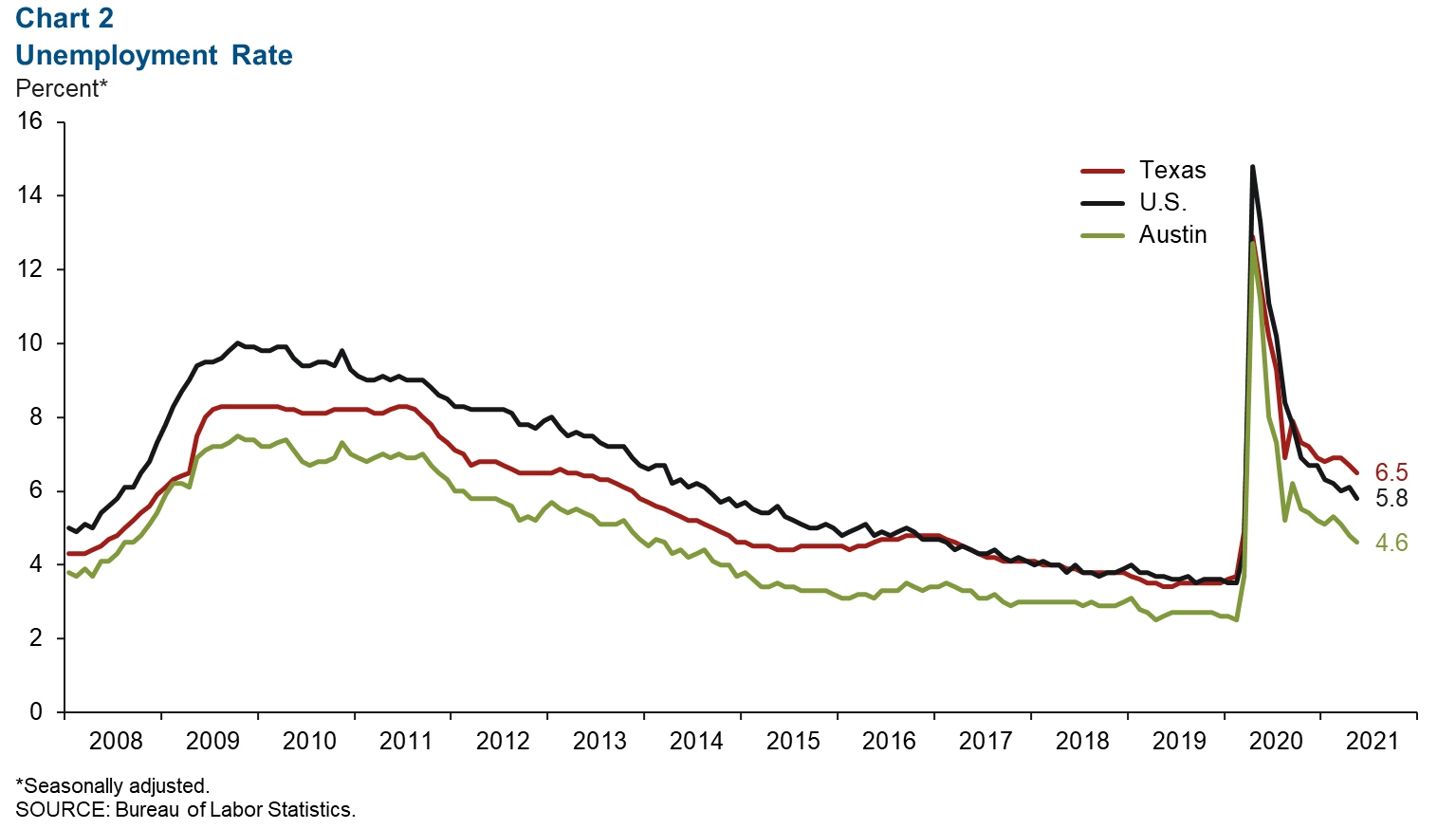
Recent Job Growth Positive in Many Sectors
Austin payrolls expanded an annualized 6.3 percent, or 17,235 net jobs, in the three months ending in May (Chart 3). Leisure and hospitality led job growth (30.0 percent, or 7,400 jobs), followed by professional and business services (14.4 percent, or 7,140 jobs), trade, transportation and utilities (5.9 percent, or 2,840 jobs), and manufacturing (5.4 percent, or 795 jobs). Sectors that posted net job losses were construction and mining (-5.8 percent, or 1,090 jobs), financial activities (-2.4 percent, or 420 jobs), and health and private education services (-2.2 percent, or 715 jobs). As of May, 91.9 percent of the 133,211 jobs lost at the onset of the pandemic in March and April 2020 had been recovered.
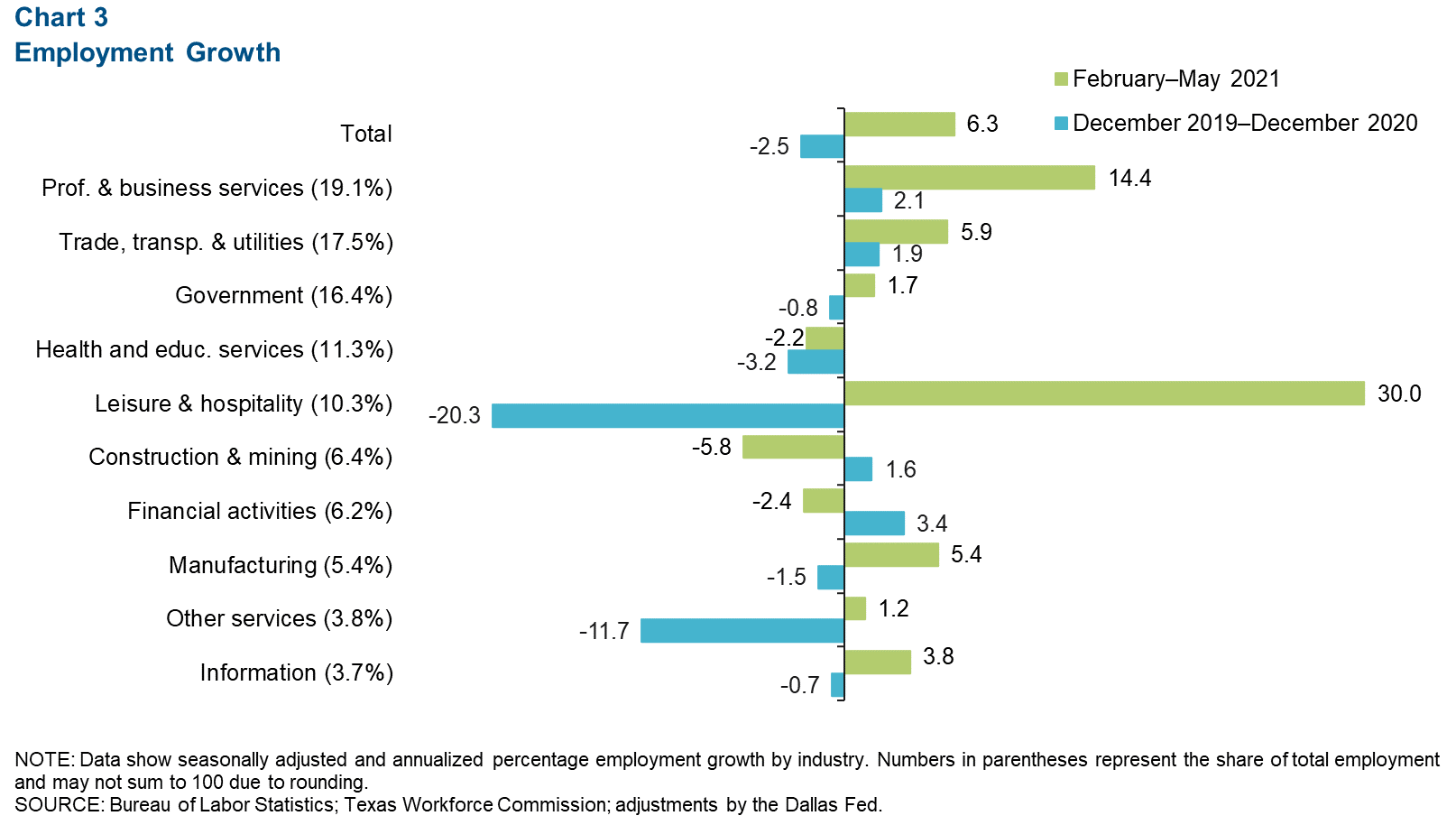
Consumer Spending
Consumer spending in Austin has been strong in recent months. In the metro’s most-populous county, Travis, credit and debit card spending has surpassed January 2020 levels since last July, except for a dip in late November 2020 and during Winter Storm Uri in mid-February. As of May 30, 2021, spending in the county was up a strong 39.5 percent relative to January 2020, while spending in Texas was up 13.3 percent (Chart 4).
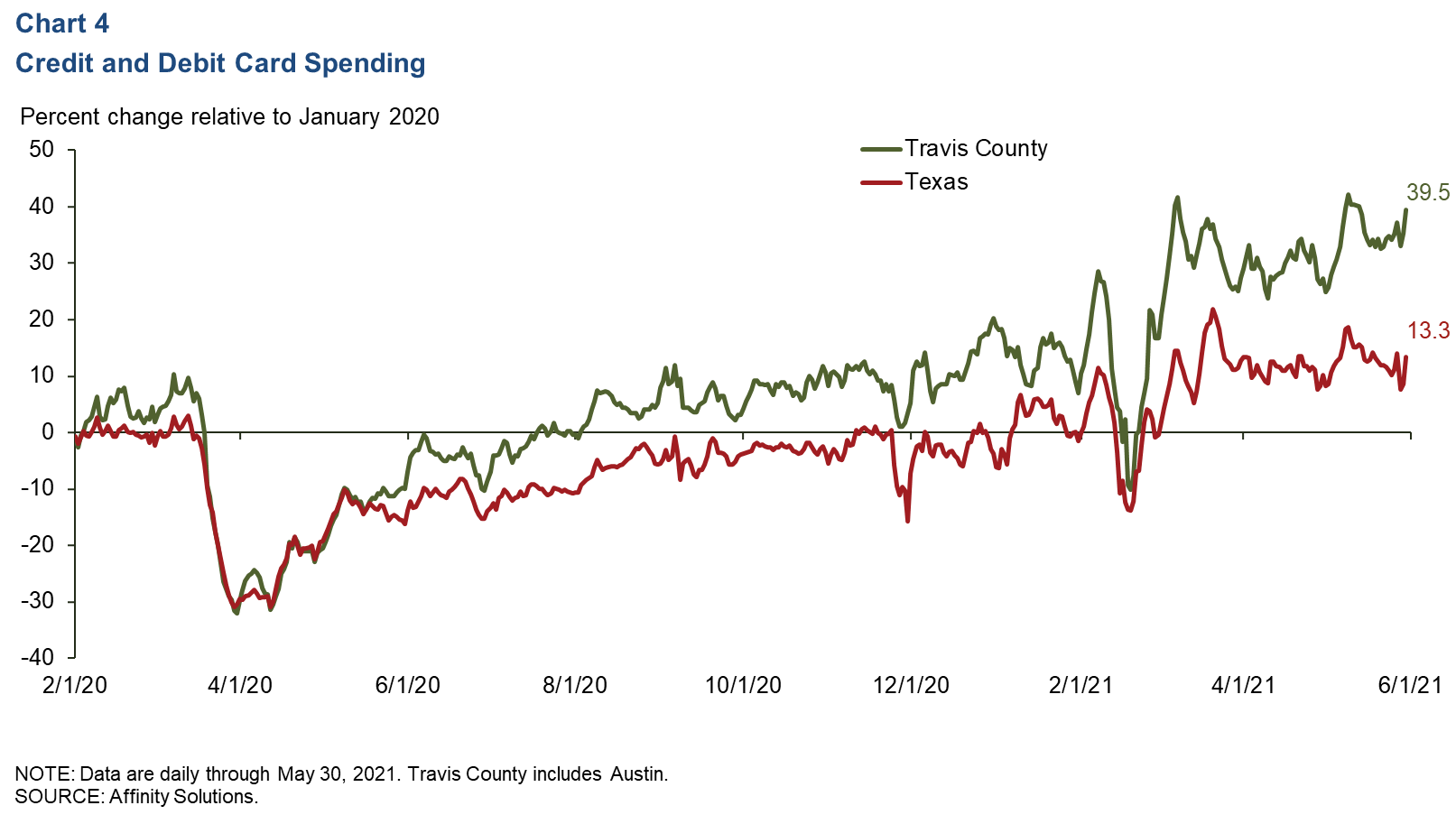
COVID-19 Hospitalizations
The number of people currently hospitalized with COVID-19 in Austin has trended down since peaking at 714 on Jan. 18 (Chart 5). At the state level, the number of COVID patients hospitalized peaked at 13,977 on Jan. 17. As of June 26, there were 78 people hospitalized in Austin and 1,489 in Texas.
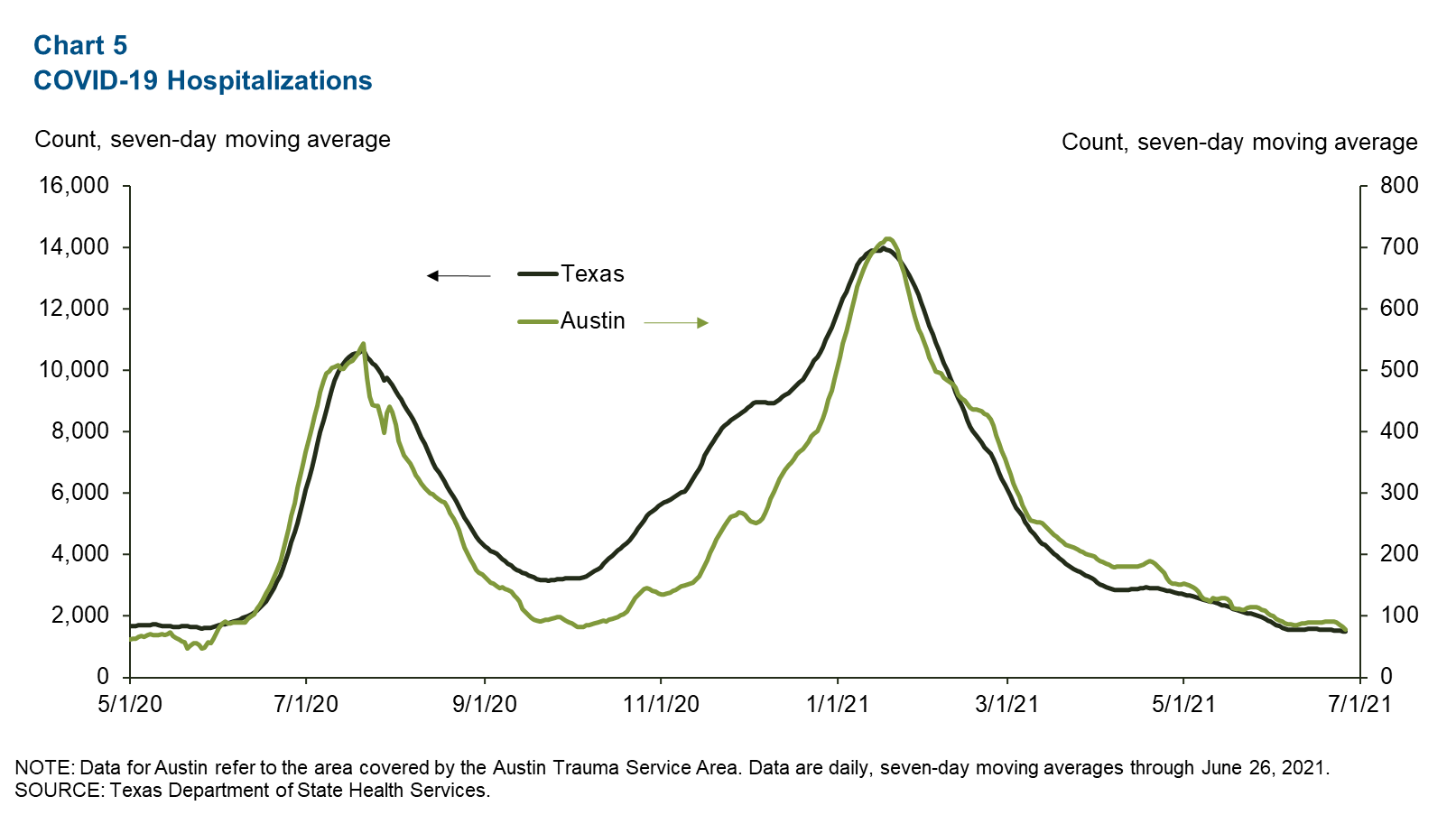
Real Estate
Existing-home sales in Austin grew a moderate 3.3 percent in May after expanding a mild 0.9 percent in April (Chart 6). That compares with a 2.9 percent increase in the state in May and 0.1 percent in April. In the first five months of 2021, metro home sales were 18.8 percent higher relative to the same period in 2020. At the state level, sales were up 20.3 percent for that period. In May, the median price of homes sold was $447,521 in the metro, a 35.1 percent rise year over year, compared with $293,327 in Texas, a 15.9 percent increase. The recent slowing of home sales is likely due in part to a lack of supply; in May, there was less than a half-month of inventory available at the current sales rate.
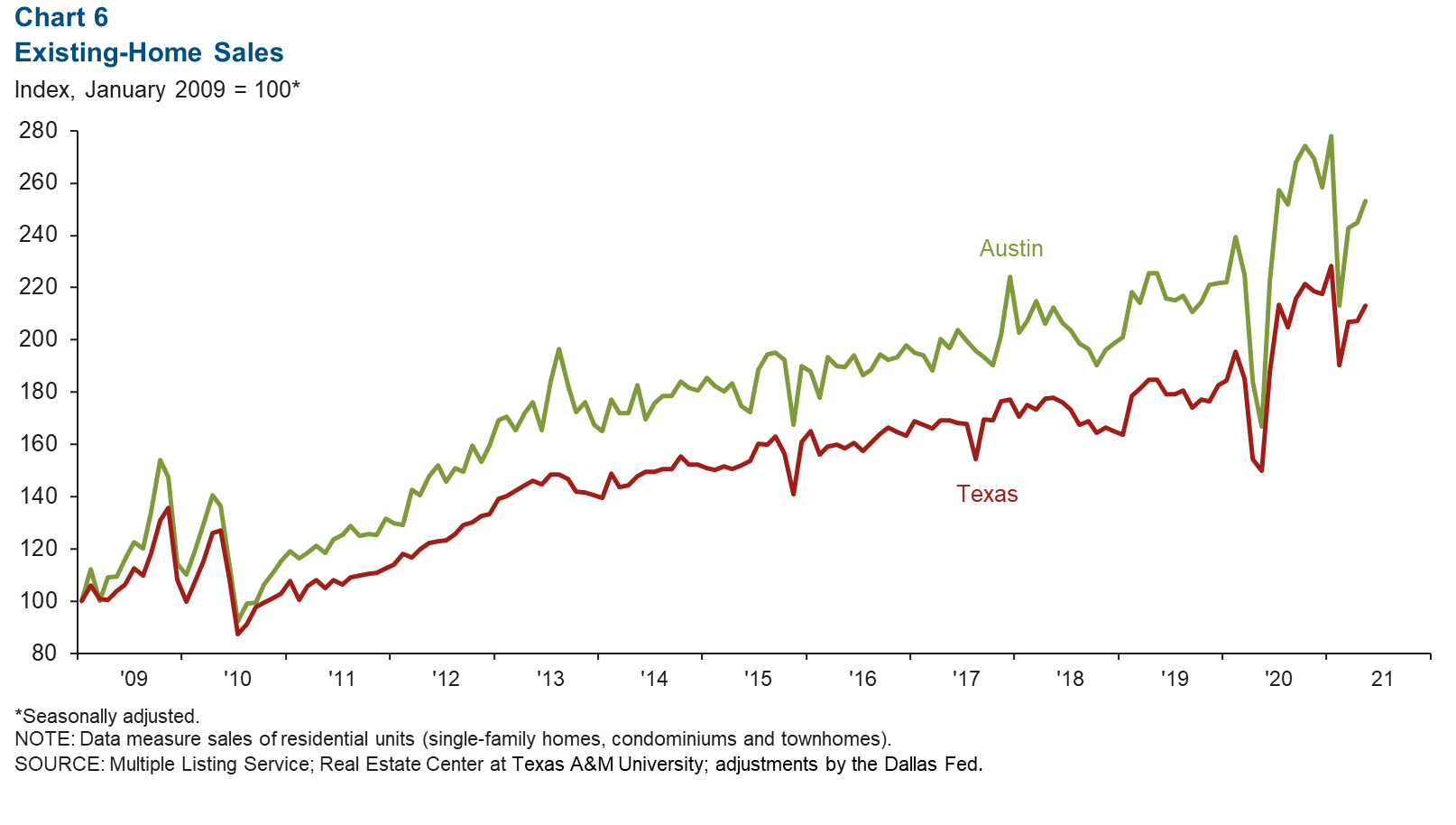
NOTE: Data may not match previously published numbers due to revisions.
About Austin Economic Indicators
Questions can be addressed to Judy Teng at judy.teng@dal.frb.org. Austin Economic Indicators is released on the first Thursday of every month.